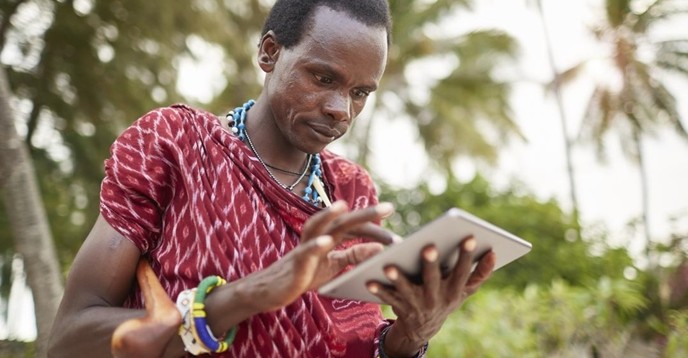ict-education-mobile-learning-c-tempura-istock.jpg

UNESCO’s mobile learning programme examines the ways connected, easily portable and increasingly affordable information and communication technology (ICT) can improve education and accelerate the implementation of the Sustainable Development Agenda.
In the past decade, mobile technology has reached the furthest corners of the planet, opening new opportunities for teaching and learning, including in communities where traditional educational services are scarce.
UNESCO works to help governments understand and harness the power of this technology to make learning more inclusive, more accessible and more equitable across life. It puts forward policy recommendations and shares best practices, drawing on the careful analysis of mobile learning initiatives implemented around the world. UNESCO also leads by example, launching field projects to test the viability of using technology to expand literacy, support teachers, empower women and girls, and enlarge learning pathways for refugees and other marginalized populations.
The Organization conducts national and regional mobile learning policy reviews, and examines how mobile phones, embedded in broader educational ecosystems, can support literacy and build the capacity of teachers.
Each year UNESCO organizes Mobile Learning Week, the United Nation’s flagship ICT in education conference, to share best practices across regions and expand the emerging knowledge base of how technology can further national and international goals for education.
Mobile Reading
The absence of books—whether in developed or developing countries—is an impediment to literacy.
Despite advances in publishing, books remain out of reach for large numbers of people. A study of 16 sub-Saharan African countries found that a majority of primary schools have few or no books. This scarcity of text slows reading acquisition and, subsequently, learning in all school subjects.
Book shortages impact middle-income and rich countries as well as developing countries. In South Africa 51 percent of households have no leisure books and only 7 percent of schools have libraries. In poor neighborhoods in the United States, the ratio of children to books is 300 to 1.
Although many parts the world are book-poor, these same places are increasingly mobile-phone rich. Today the United Nations estimates that 6 billion people have access to a working mobile phone and over 90 percent of the population is blanketed by a mobile network.
Due to the ubiquity of mobile devices, UNESCO is investigating how they can be leveraged to advance literacy in line with Sustainable Development Goal 4.6. The data connectivity fees required to read an open-access book on a mobile phone can be as little as 2 or 3 cents, while the cost of a comparable paper-and-ink book is often over 10 USD. This means that mobile reading can be 300 to 500 times cheaper than reading books in a physical format. Mobile books are also typically easier to distribute, easier to update, and, in some instances, more convenient than paper-and-ink alternatives.
For these reasons, UNESCO is illuminating strategies to expand mobile reading and, by extension, the educational and socio-economic benefits associated with increased reading.
